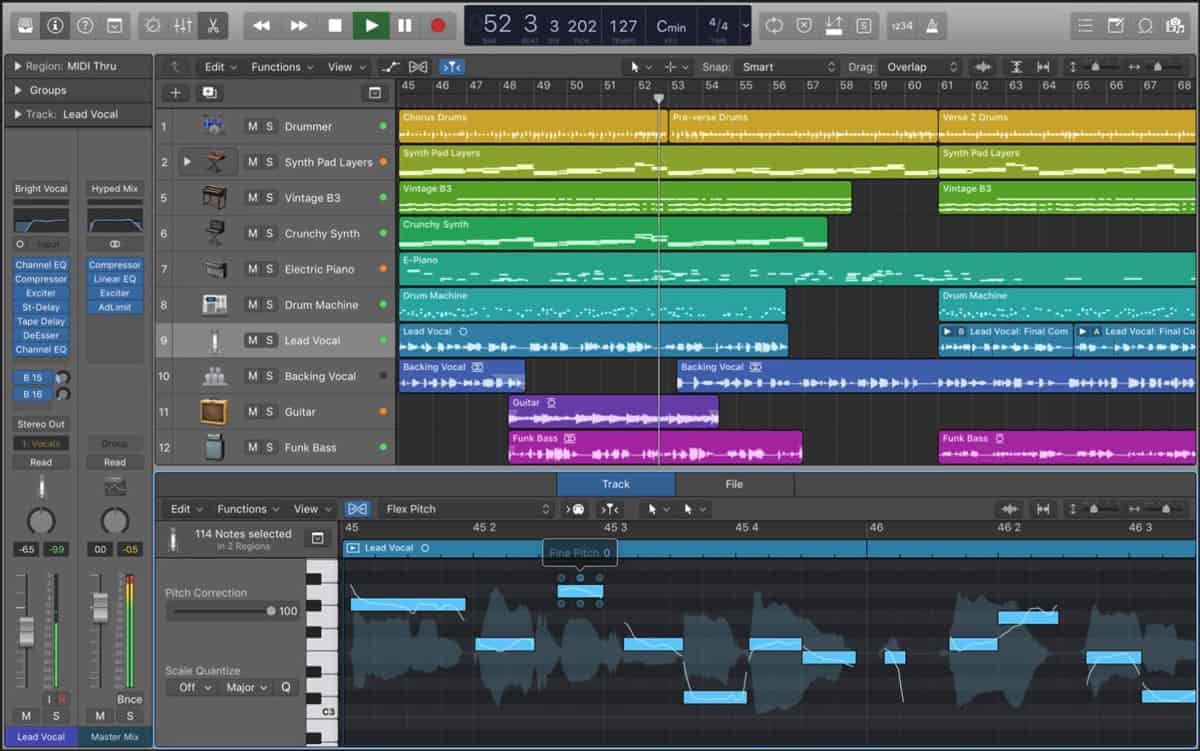TL;DR
Upgrading to macOS 10.13 High Sierra will break Logic Pro X on some systems with both Logic Pro 9 and X.
Apple launched Logic Pro X back in 2013, but it has been refining its feature set and functionality since then with the previous update, 10.4, adding a new reverb instrument called ChromaVerb and Smart Tempo. The 10.5 update takes things a step further by completely redesigning workflow options for musicians and adding a range of beat-making tools. Logic Pro X expert brings you comprehensive Logic Pro X 10.6 video tutorials! With over 5 hours of runtime, you'll learn all about the new features and functions added to Logic Pro X 10.6 such as Live Loops, the Step Sequencer, Sampler, Quick Sampler, Remix FX and much, much more, as well as how to use them effectively. Apple unveiled the biggest update to Logic Pro X since its launch, announcing a professional version of Live Loops, new sampling plug-ins and improvements to a number of its beat-making tools. MainStage, Compressor, Motion, and Logic Remote have also all been updated to go along with the main Final Cut Pro and Logic Pro updates. All of the software can be downloaded from the Mac App Store. Logic Remote Touch and flow. Logic Remote lets you use your iPhone or iPad to control Logic Pro on your Mac. Use Multi-Touch gestures to play software instruments, mix tracks, and control features like Live Loops and Remix FX from anywhere in the room. Swipe and tap to trigger cells in Live Loops.
Background
Apple moved the user directory out of ~/Library/Application Support/Logic folder with the introduction of Logic Pro X.
Those who installed Logic Pro X on a new system got a new folder called Audio Music Apps and everything from now on could be accessed from this directory.

Some of us that have used Logic Pro 9 and installed Logic Pro X on that same system had instead a directory hard link created to mimic the contents of the old ~/Library/Application Support/Logic folder. This way we could access all our old custom samples and Channel Strip Settings with the added benefit of being able to work with both Logic Pro 9 and X in tandem.
Enter macOS 10.3 High Sierra.
The latest macOS from Apple converts your SSD system drive automatically from HFS+ to APFS –the latest file system– without asking, and this has at least one downside for us with the hard linked directories.
APFS does not support hard links and the links from ~/Library/Application Support/Logic and ~/Music/Audio Music Apps will break on those systems using this method of mirroring.
APFS will automatically convert hard links to Finder Aliases but those will be orphaned (I'm not sure if this is a bug in the first iteration of High Sierra or if this is expected behavior?).
This will totally break Logic Pro X since it can not find some of the content it needs to function properly.
The good thing is this content isn't deleted from your hard drive even though Apple has hidden it. The location of the content is now inside a folder inside /.HFS+ Private Directory Data?.
This folder will have a directory name of `dir_` followed by a some digits. You can safely recover your content and move it to the expected location.
How To Update Logic Pro X
Use this command in the Terminal to reveal the hidden directory and view it in a finder window:
open /.HFS+ Private Directory Data?/
Additional thoughts
- I would first and foremost advice to be patient and not to update to High Sierra right away. Many older apps will not work, including Logic Pro 9.
- If you absolutely want or need to update you can do so without converting your system drive to APFS. Don't get me wrong, there are plenty of advantages to APFS but it's a new file system that may need a few tweaks here and there. It will also save you from some of these head-scratchers. You can use this method if you want to upgrade to macOS 10.13 High Sierra but don't want to change the file system from HFS+ to APFS:
- Download High Sierra from the Mac App Store
- Quit the installer when it prompts you to install.
- Launch the Terminal and type the following:
'/Applications/Install macOS High Sierra.app/Contents/Resources/startosinstall' --converttoapfs NO - Proceed with the installation.
- Another method could be to break the hard link for /Music/Audio Music Apps and for ~/Library/Application Support/Logic prior to the macOS install. This would save you the annoyance of hunting down the hidden directory after the fact.
Join the discussion in the forum >>>.
Eric Cardenas
Vocalist, Bass player, and Guitarist based in Uppsala, Sweden
Audio engineer with an affinity for computers working primarily in Logic Pro.

